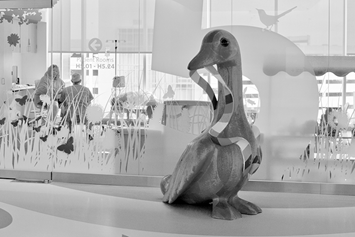
Practice Tool
These guidelines explore how to manage functional constipation in a primary care setting and offer important information regarding medication coverage.
Clinical Pathway
Constipation and Fecal Impaction
This clinical pathway guides the diagnosis of constipation and fecal impaction and management of these conditions in the urgent care and emergency department.
Helping Hands

Constipation: Child Over One Year of Age
This Helping Hand™ covers how constipation is a common problem in children, but it can be a cause for concern for parents. A constipated child has difficulty moving their bowels, does not have bowel movements often enough, or has hard or dry stool (poop).

Constipation: Infant
This Helping Hand™ covers constipation in infants less than one year of age. It is common, but it can be a concern for parents. Signs of constipation include infrequent stools that are difficult to pass and straining more than normal to have a bowel movement. Even if a baby is not constipated, bowel movements may be irregular.
Biofeedback for Constipation and Pelvic Floor Dysfunction
Biofeedback is a therapy used to help children who cannot always have a bowel movement when they need to.
Bowel Cleanout
Your child is constipated and needs help to clean out the large amount of stool (poop) in the intestine.
Constipation Guidelines for Primary Care Providers
Constipation Decision Tree (Age > 1 year)
Patient (> 1 year old*) presents with constipation
- History
- Physical exam including perianal exam
- Consider digital rectal exam
Red flags present?
Next
Assess for impaction or fecal incontinence (soiling). (See definitions; Appendix.)
Contact pediatric gastroenterologist for phone consultation
Nationwide Children’s Hospital: (614) 355-0221 or (877) 355-0211
Maintenance therapy
Review constipation action plan with patient/caregiver.
Follow-up
Assess if treatment was effective.
Outcome
If patient is doing well
Continue maintenance therapy for at least six months.
If maintenance was ineffective
Begin disimpaction protocol or adjust maintenance / add stimulant.
Disimpaction protocol
Review constipation action plan with patient/caregiver.
Follow-up
Was disimpaction effective? (Defined as patient having multiple transparent liquid stools in a day.)
If YES
Transition to maintenance therapy and review the constipation action plan.
If NO
Assess adherence and Social Determinants of Health; repeat disimpaction protocol (intensify if previously adherent) up to two times.
If protocol was followed two times
- Obtain laboratory studies
- Contact pediatric gastroenterologist for phone consultation: (614) 355-0221 or (877) 355-0221
